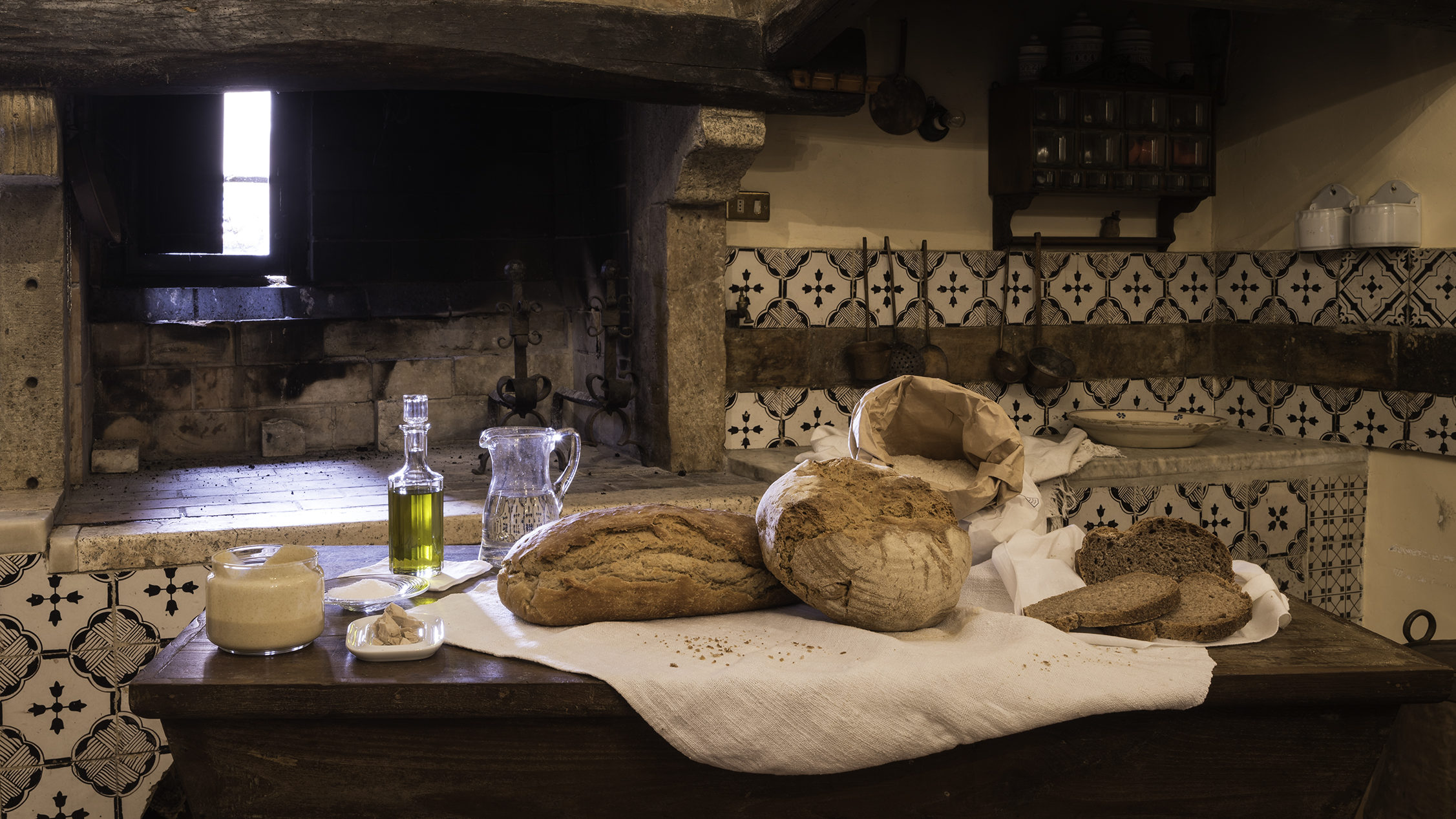Pane con farina integrale di grano duro Russello
Test innovativo
Il pane di grano duro Russello [4] è stato realizzato con la tecnica del preimpasto ( 800gr. Di farina) seguito dall’impasto finale (preimpasto più altri 1000gr. di farina). Il preimpasto di 800gr. è stato fatto fermentare a 18 gradi per 12 ore; l’impasto [1] finale composto dal preimpasto e da altri 1000gr. di farina è stato messo a riposo a 5 gradi per 24 ore per la maturazione seguito poi dalla lievitazione e cottura.
La farina (1800gr) è stata passata al setaccio 600 micron; 1000gr. di farina setacciata sono stati utilizzati per l’impasto finale. La parte residua della farina setacciata e tutta la crusca risultante dalla setacciatura sono stati utilizzati per il preimpasto. In questo modo il preimpasto risulta “arricchito” in crusca. Il preimpasto comprende pasta madre e una minima frazione di lievito di birra fresco compresso.
Foto nn. 1-2-3-4
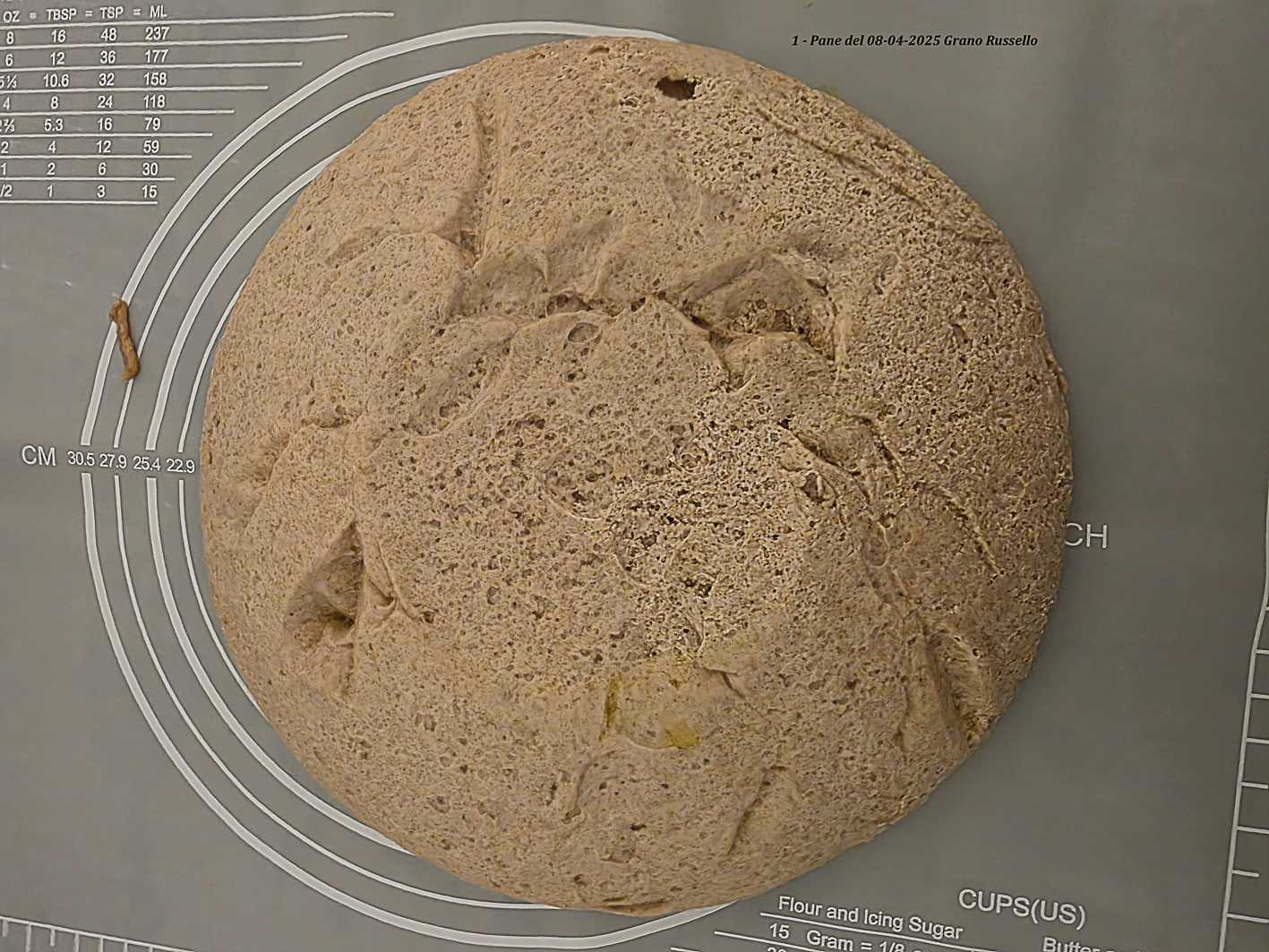 |
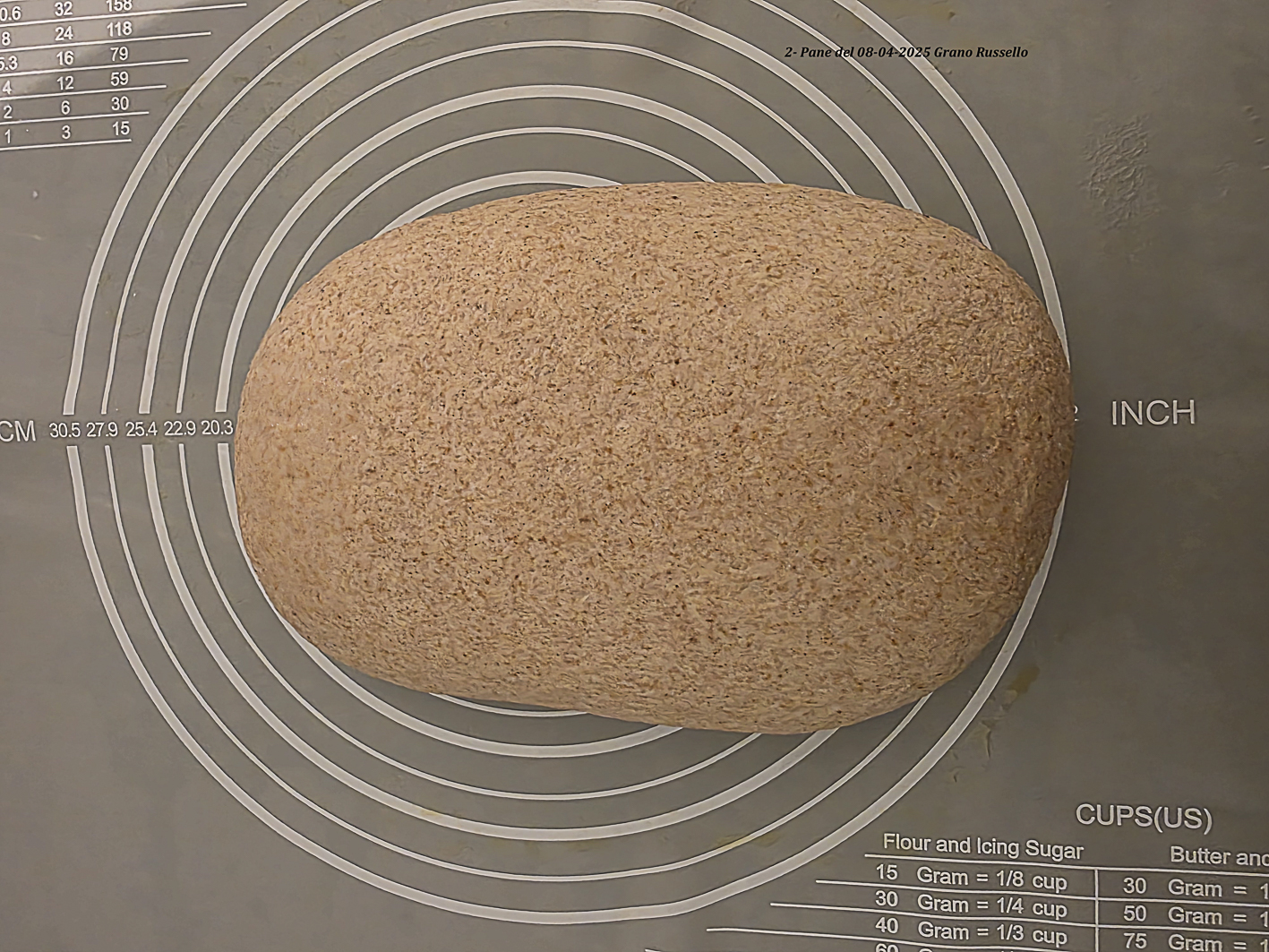 |
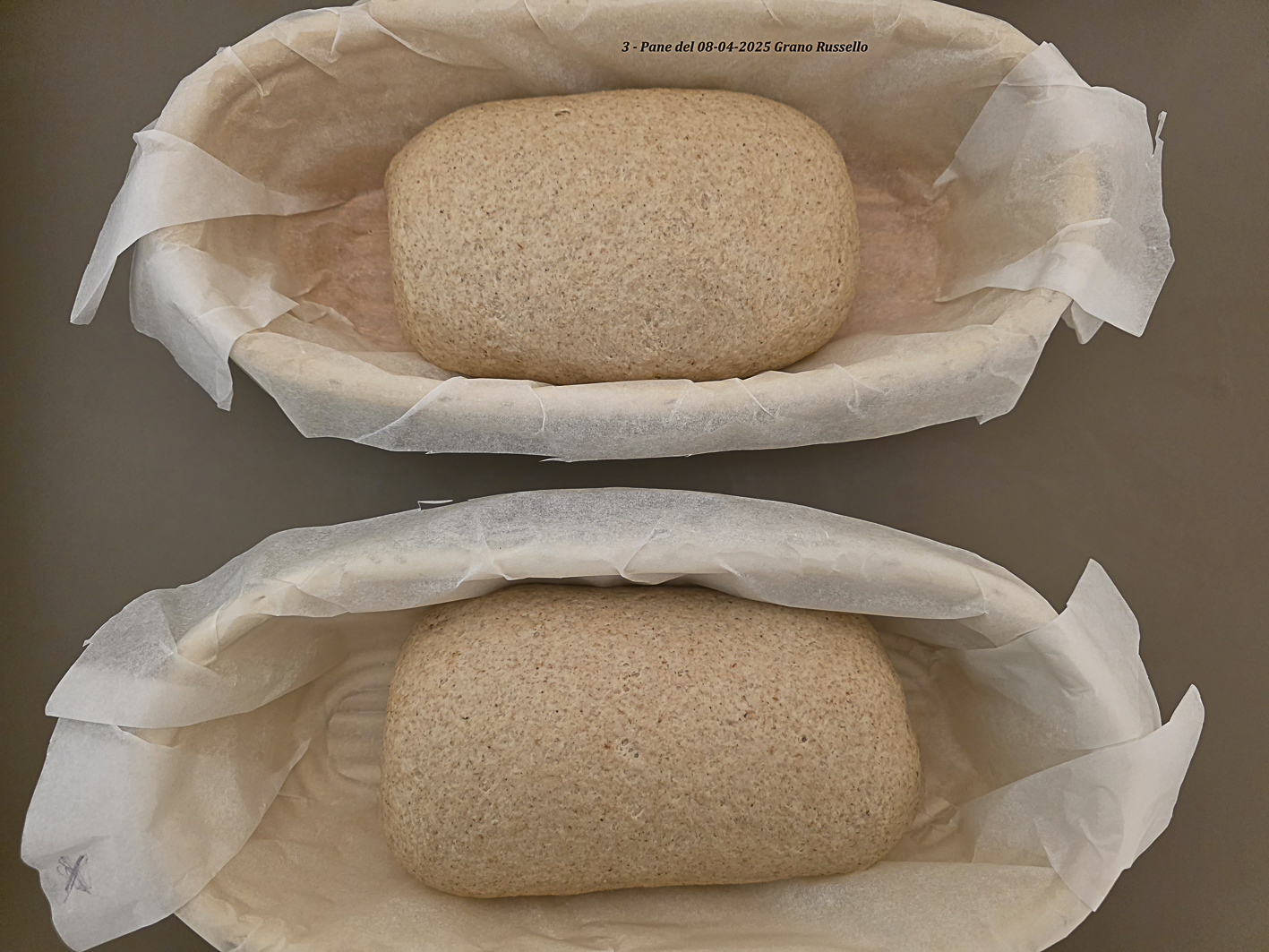 |
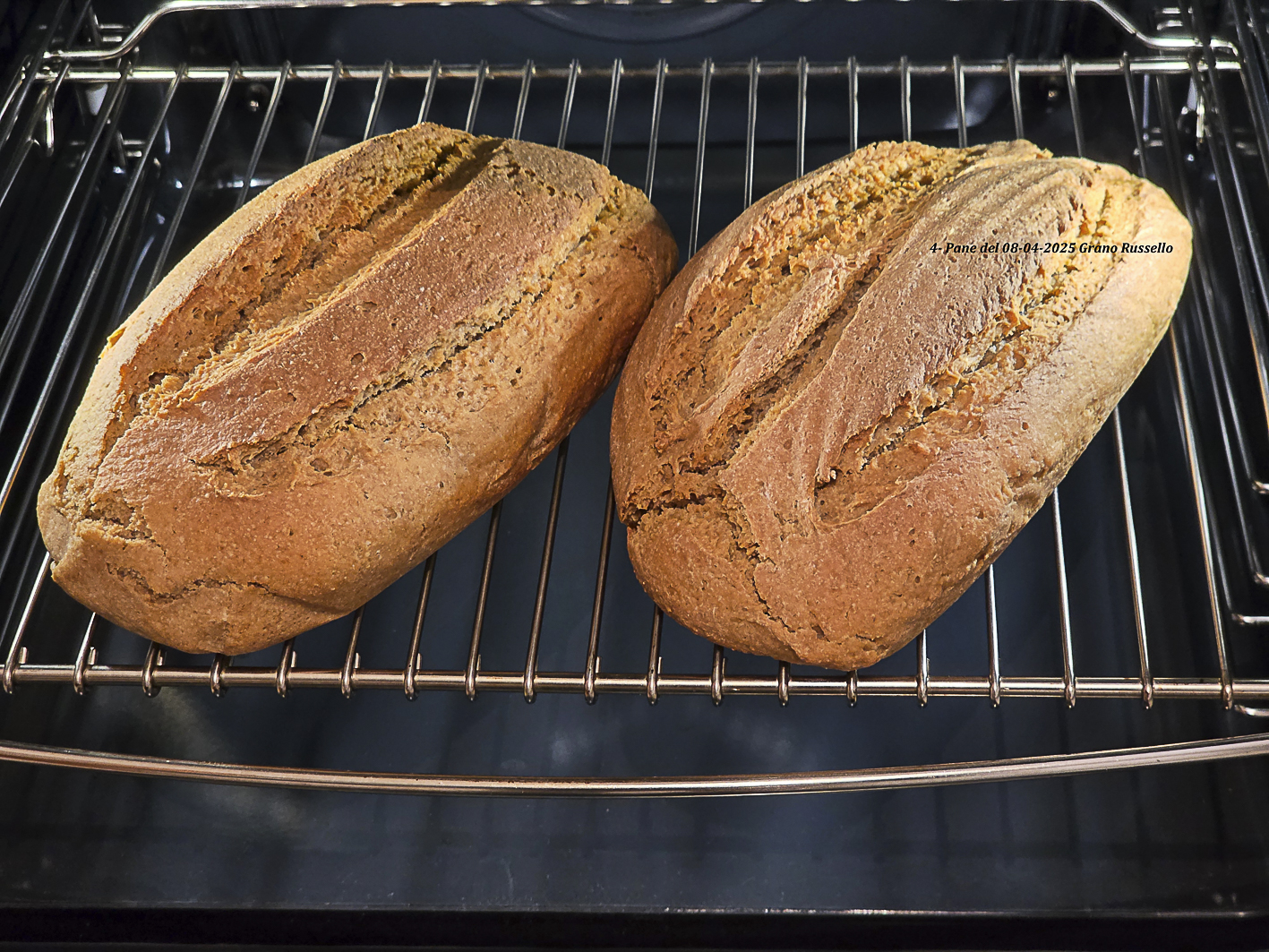 |
L’ottimo risultato appare ben evidente se analizziamo la texture del pane.
Elementi chiave della texture del pane:
-
Mollica:
Alveolata: Formata da bolle d’aria irregolari come dimensione e come diffusione.
-
Crosta:
Spessa: Crosta consistente, con più aroma e maggiore durata del pane.
-
Densità:
La consistenza della mollica è piuttosto aperta “leggera” tenuto conto che è stata utilizzata una farina integrale di grano duro. L’aggiunta di olio extravergine di oliva 4% sul totale della farina rende la mollica “morbida”.
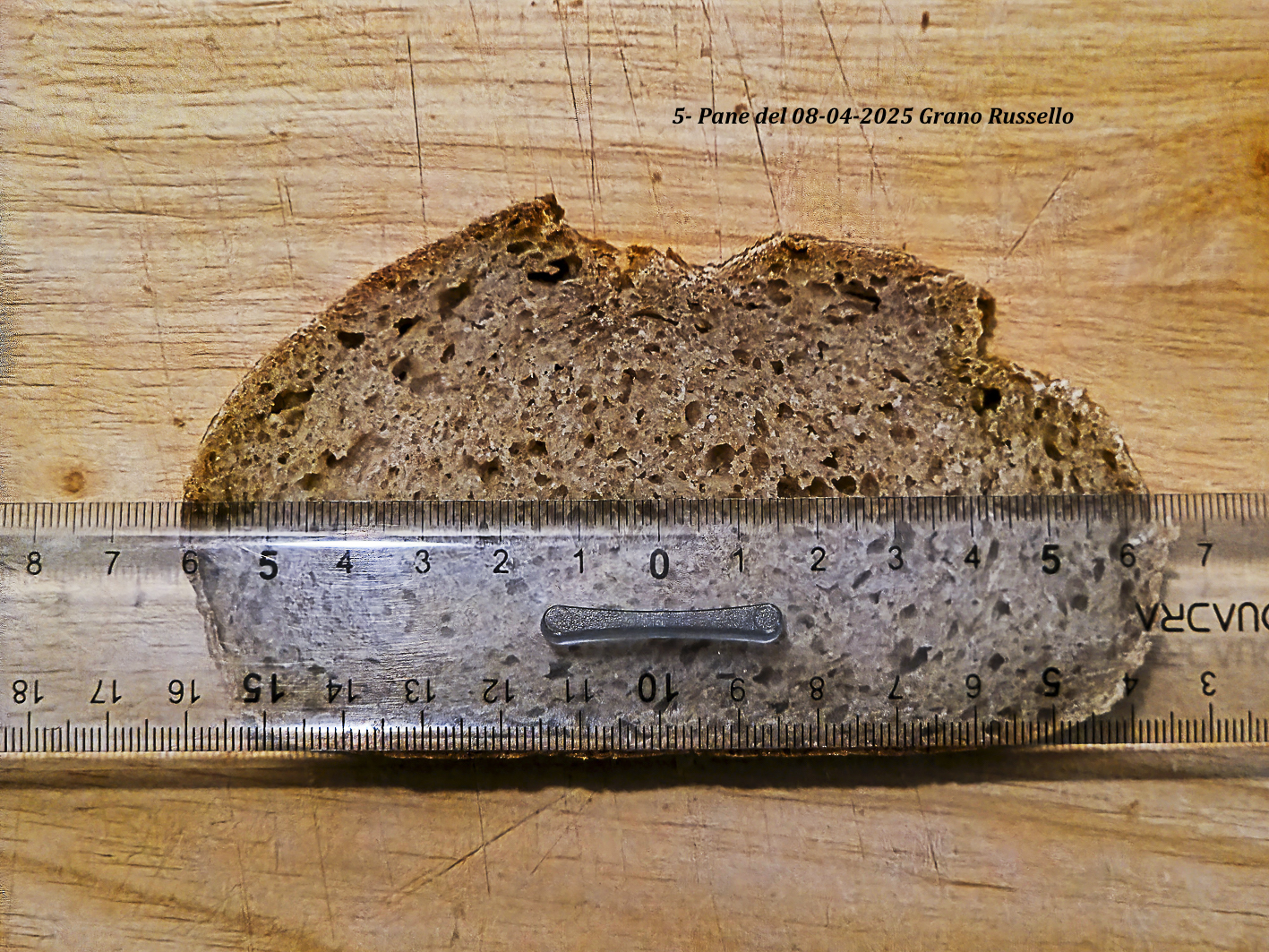
Questa scelta deriva da ricerche riguardanti le caratteristiche della fermentazione della crusca che “After fermentation, bran exhibits improved chemical composition and nutritional value. The process reduces antinutritional components while enriching the bran with beneficial compounds like amino acids and probiotics. [2]”. Fermentation has been an effective way to degrade cell wall fiber, thereby improving nutrition and quality of wholegrain or bran-rich food products [3].”
Riferimenti
[1]
Il preimpasto comprende oltre alla farina come nel testo specificata:
1 – lievito madre preparato con farina di grano monococco (farina integrale passata al setaccio 600 micron) utilizzato solo nella fase del preimpasto con la percentuale del 10% sul totale della farina.
2 – lievito di birra fresco compresso in minima quantità, 2 gr. su 800 gr. di farina.
L’impasto finale comprende oltre alla farina come nel testo specificata:
1 – lievito di birra fresco compresso in minima quantità, 3 gr. su 1000 gr. di farina.
2 – sale, malto e olio extravergine di oliva.
Nota: Caratteristiche farina integrale di grano duro Russello: Umidità 14,20; Glutine (quantità ) 9,8%; indice di glutine medio (qualità ) 15 (dati forniti dal produttore: Mulino Angelica, Modica Sicilia).
[2] “Bran is a by-product primarily derived from the milling of grains, notably wheat and rice. It is rich in dietary fier, vitamins, minerals, and phytochemicals yet often remains under utilized in its raw form. This raw material is abundant and readily available, offering significant potential for value-added applications. In its unprocessed state, bran boasts a complex chemical composition that includes proteins, lipids, and carbohydrates. However, it also contains antinutritional components such as phytic acid and enzyme inhibitors, which may limit its nutritional efficacy. Through further processing or storage, these components can be transformed to enhance their antioxidant properties and overall nutritional value. Bran is used in both animal feed and human food appli- cations, though its use is often hindered by its high fiber content and antinutritional factors. To maximize its utility, innovative processing techniques are required to improve its digestibility and nutrient availability. Fermentation presents a viable method for enhancing the nutritional profile of bran. This process typically employs microorganisms such as bacteria, yeast, or fungi to break down complex compounds, thereby increasing the bioavailability of nutrients. After fermentation, bran exhibits improved chemical composition and nutritional value. The process reduces antinutritional components while enriching the bran with beneficial compounds like amino acids and probiotics. Alternative Uses of Fermented Wheat Bran: A Mini Review.
Ma, L.; Wang, H.; Qiu, Y.; Bai, Z.; Yang, Z.; Li, E.; Ma, X.; Xiao. Fermentation 2024, 10, 611. https://doi.org/10.3390/fermentation10120611”
[3] “Highlights
1. Fermentation can effectively break down the cell wall fiber to enhance the nutritional effect in wheat bran.
2. Health benefits of fermented wheat bran are likely mediated by a combination of mechanisms.
3. Fermentation mitigates the negative influence of wheat bran on the food substrate.
Abstract. Consumption of wheat bran is associated with health benefits. However, the insoluble cell layer fiber and considerable levels of anti-nutritional factors limit bioavailability of wheat bran, which can be effectively improved through fermentation. To comprehensively elucidate the precise biotransformation and health benefits mechanisms underlying wheat bran fermentation. This review investigates current fermentation biotechnology for wheat bran, nutritional effects of fermented wheat bran, mechanisms by which fermented wheat bran induces health benefits, and the application of fermented wheat bran in food systems. The potential strategies to improve fermented wheat bran and existing limitations on its application are also covered. Current findings support that microorganisms produce enzymes that degrade the cell wall fiber of wheat bran during the fermentation, releasing nutrients and producing new active substances while degrading anti-nutrient factors in order to effectively improve nutrient bioavailability, enhance antioxidant activity, and regulate gut microbes for health effects. Fermentation has been an effective way to degrade cell wall fiber, thereby improving nutrition and quality of whole grain or bran-rich food products. Currently, there is a lack of standardization in fermentation and human intervention studies. In conclusion, understanding effects of fermentation on wheat bran should guide the development and application of bran-rich products. Fermentation biotechnology applied to wheat bran for the degradation of cell wall fiber and its potential health benefits: A review. Ling Fon et al. https://doi.org/10.1016/j.ijbiomac.2024.133529. “
[4] Il Russello (detto anche rossello, ruscio o russieddru) è un grano duro e si riconosce facilmente per le sue alte spighe di colore rosso acceso. Specie particolarmente diffusa in territorio ibleo ha una resa produttiva più bassa rispetto ad altre tipologie di grano, ma apprezzata per i suoi elevati valori energetici e nutrizionali e perché la sua farina è facilmente digeribile grazie ad un ridotto indice di glutine.
Argomento correlato:
Wheat Bran: overwiew part I
Wheat Bran: overwiew part II
Riferimenti
Francesca Taranto, Ermanno Di Serio, Monica Marilena Miazzi, Stefano Pavan, Sergio Saia, Pasquale De Vita e Nunzio D’Agostino, Intra- and Inter-Population Genetic Diversity of “Russello” and “Timilia” Landraces from Sicily: A Proxy towards the Identification of Favorable Alleles in Durum Wheat, in
